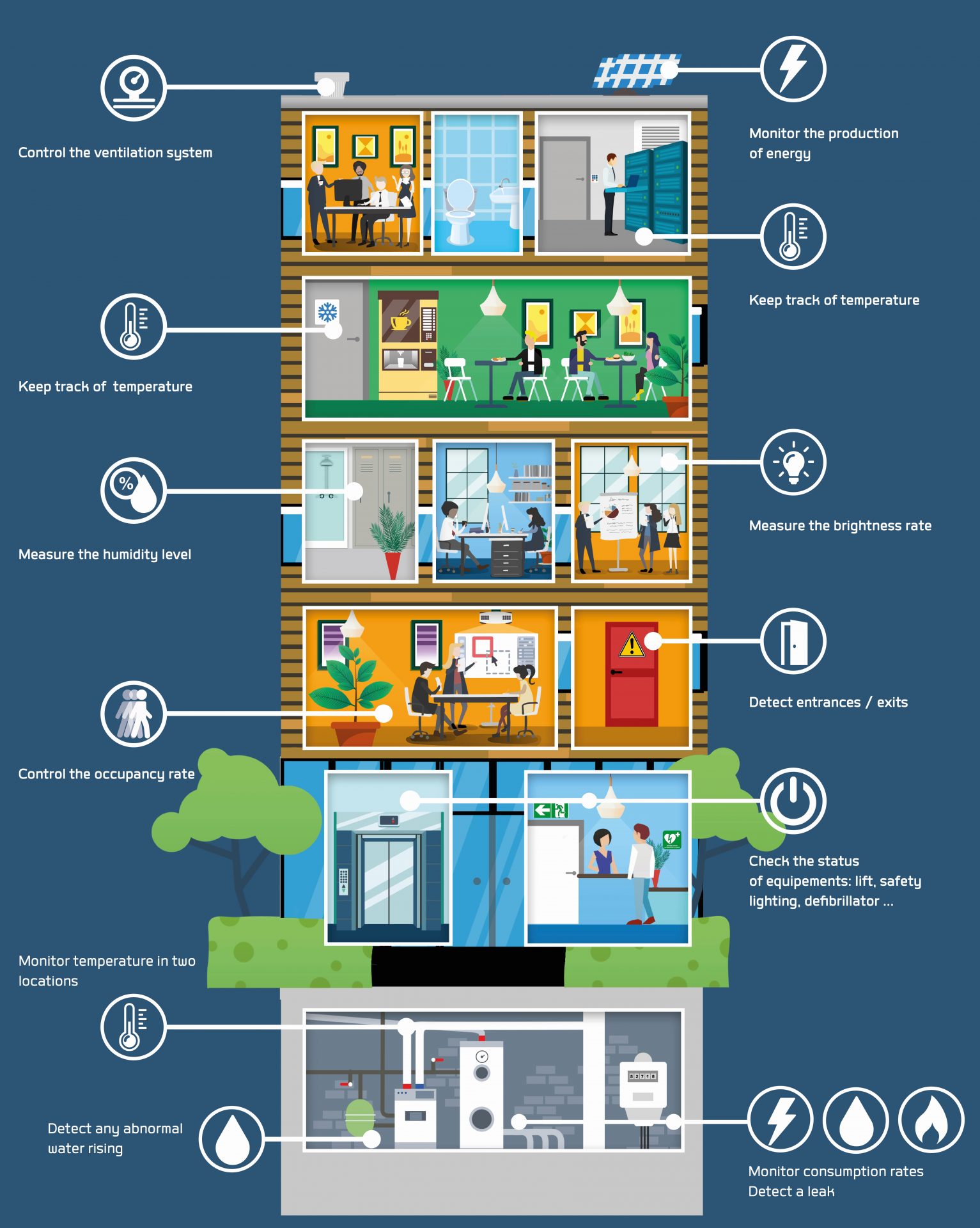Building Secure and Scalable IoT Solutions

In the era of the Internet of Things (IoT), interconnected devices are rapidly proliferating, bringing unprecedented opportunities for innovation. However, with the growth of IoT devices, concerns about security and scalability become paramount. To effectively address these challenges, it is crucial to adopt best practices and employ robust technologies when designing and implementing IoT solutions.

Security Considerations

- Device Authentication and Authorization: Devices should be authenticated and authorized before connecting to the network to prevent unauthorized access. This can be achieved through the use of strong encryption algorithms and secure protocols.
- Data Encryption: Data transmitted over the network should be encrypted to protect it from eavesdropping and unauthorized modification.
- Secure Firmware Updates: Devices should be regularly updated to patch security vulnerabilities. Implement a secure mechanism for firmware updates to prevent malicious updates.
- Access Control: Implement fine-grained access control mechanisms to restrict access to data and functionality based on user roles and permissions.
Scalability Considerations
- Cloud-Based Architecture: Leverage cloud platforms to handle data storage, processing, and device management, allowing for elastic scaling as needed.
- Device Agnostic Design: Design solutions that are compatible with multiple device types and protocols to support a wide range of IoT devices.
- Data Management: Implement efficient data pipelines to handle the large volumes of data generated by IoT devices. Optimize storage and retrieval strategies to ensure optimal performance.
- Centralized Control and Management: Establish a centralized platform for monitoring, controlling, and managing IoT devices, enabling efficient fleet management and remote configuration.
Best Practices
- Follow Industry Standards: Adhere to established security and scalability standards, such as NIST and ISO, to ensure best practices are followed.
- Regular Penetration Testing: Conduct regular penetration testing to identify vulnerabilities and address them proactively.
- Use Proven Technologies: Utilize established and trusted technologies, such as SSL/TLS for encryption and OAuth for authentication, to minimize security risks.
- Enable Over-the-Air (OTA) Updates: Allow devices to be updated securely without requiring manual intervention.
- Monitor Regularly: Continuously monitor IoT devices and networks for suspicious activity to detect and respond to security incidents promptly.
By incorporating security and scalability considerations into the design and implementation of IoT solutions, organizations can ensure the integrity and reliability of their IoT systems. This promotes innovation and enables the full potential of IoT to transform industries and improve lives.## Building Secure and Scalable IoT Solutions
Executive Summary
The Internet of Things (IoT) is experiencing rapid growth, with billions of connected devices expected to be deployed in the coming years. This growth presents significant opportunities for businesses, but it also raises concerns about security and scalability.
This guide will provide an overview of the key considerations for building secure and scalable IoT solutions. We will cover topics such as device security, data security, and network security. We will also discuss the importance of scalability and how to design IoT solutions that can handle the demands of large-scale deployments.
Introduction
The IoT is a network of physical devices that are connected to the internet and can collect and exchange data. These devices can include everything from smart home appliances to industrial sensors.
The IoT has the potential to revolutionize many industries, by improving efficiency, reducing costs, and creating new opportunities. However, the IoT also presents a number of challenges, including security and scalability.
Device Security
Device security is a critical consideration for IoT solutions. Connected devices can be vulnerable to a variety of attacks, including malware, hacking, and denial of service attacks. It is important to take steps to secure devices at the hardware, software, and network levels.
- Hardware security: Use secure hardware components, such as trusted platform modules (TPMs), to protect devices from physical attacks.
- Software security: Implement strong software security measures, such as encryption, authentication, and authorization, to protect devices from software attacks.
- Network security: Protect devices from network attacks by using secure network protocols, such as TLS and VPNs.
- Physical security: Protect devices from physical attacks by placing them in secure locations and using physical security measures, such as access control and video surveillance.
- Vulnerability management: Regularly scan devices for vulnerabilities and patch any vulnerabilities that are found.
Data Security
Data security is another important consideration for IoT solutions. The data collected by IoT devices can be sensitive, including personal information, financial data, and trade secrets. It is important to take steps to protect this data from unauthorized access, use, or disclosure.
- Data encryption: Encrypt data at rest and in transit to protect it from unauthorized access.
- Data access control: Implement strong data access controls to limit who can access data and what they can do with it.
- Data integrity: Ensure the integrity of data by using techniques such as hashing and digital signatures.
- Data retention: Implement data retention policies to determine how long data will be stored and how it will be disposed of.
- Data anonymization: Anonymize data to protect the privacy of individuals.
Network Security
Network security is also important for IoT solutions. The network is the pathway through which devices communicate with each other and with the internet. It is important to protect the network from unauthorized access, attacks, and denial of service attacks.
- Network segmentation: Segment the network into different zones to limit the spread of attacks.
- Firewall: Implement a firewall to block unauthorized access to the network.
- Intrusion detection system (IDS): Implement an IDS to detect and respond to attacks on the network.
- Access control lists (ACLs): Use ACLs to control who can access network resources.
- Network encryption: Encrypt network traffic to protect it from eavesdropping.
Scalability
Scalability is another important consideration for IoT solutions. IoT solutions must be able to handle the demands of large-scale deployments. This includes being able to support a large number of devices, handling large volumes of data, and providing a consistent level of performance.
- Device management: Implement a device management system to manage the devices in the IoT solution.
- Data management: Implement a data management system to manage the data collected by the devices.
- Cloud computing: Use cloud computing to provide the scalability and reliability needed for large-scale IoT deployments.
- Edge computing: Use edge computing to process data closer to the devices, reducing the load on the network and cloud.
- Microservices: Design the IoT solution using microservices to make it more scalable and easier to maintain.
Conclusion
Building secure and scalable IoT solutions is a complex challenge. However, by following the best practices outlined in this guide, you can develop IoT solutions that are secure, scalable, and able to meet the demands of large-scale deployments.
Keyword Tags
- IoT security
- Data security
- Network security
- Scalability
- Cloud computing
FAQs
Q: What are the most important considerations for IoT security?
A: The most important considerations for IoT security are device security, data security, and network security.
Q: How can I protect my IoT devices from attacks?
A: You can protect your IoT devices from attacks by implementing strong hardware security, software security, and network security measures.
Q: How can I protect the data collected by my IoT devices?
A: You can protect the data collected by your IoT devices by encrypting data at rest and in transit, implementing strong data access controls, and ensuring the integrity of data.
Q: How can I scale my IoT solution to handle large-scale deployments?
A: You can scale your IoT solution to handle large-scale deployments by using a device management system, a data management system, cloud computing, edge computing, and microservices.
Q: What are the benefits of using cloud computing for IoT solutions?
A: The benefits of using cloud computing for IoT solutions include scalability, reliability, and cost-effectiveness.

Interesteng ideas. This should help to improve the quality of IoT solutions.
Thiz is a good start, but more work is needed to address the challenges of scalability and security in IoT solutions.
The article provides a comprehensive overview of the key considerations for building secure and scalable IoT solutions. It highlights the importance of using a layered approach to security and the need to consider the scalability of the solution from the outset.
I disagree with the author’s claim that a layered approach to security is sufficient to protect IoT solutions. I believe that a more holistic approach is needed, one that includes a focus on physical security and user education.
Sure, a layered approach to security is important, but let’s not forget about the need for scalability. IoT solutions need to be able to handle a large number of devices and data streams.
I couldn’t help but notice the author’s use of the term “scalability”. It seems like a buzzword that gets thrown around a lot these days. What does it really mean in the context of IoT solutions?
Hey, has anyone seen my dog? He’s a small, white poodle with a black nose. I lost him in the park this morning.
This article is a must-read for anyone involved in the development of IoT solutions. It provides a wealth of valuable insights and best practices.
I’m not sure I agree with the author’s conclusions. I think there are other factors that need to be considered when building secure and scalable IoT solutions.
I’m a bit confused about the author’s use of the term “scalability”. Can someone explain what it means in the context of IoT solutions?
I disagree with the author’s claim that a layered approach to security is sufficient to protect IoT solutions. I believe that a more holistic approach is needed.
I’m surprised that the author didn’t mention the importance of user education in building secure IoT solutions.
I’m afraid that the author’s recommendations are not practical for small businesses with limited resources.
I’m not sure if I’m the only one, but I found the article to be a bit overwhelming. It would be helpful if the author could provide a more concise summary of the key points.